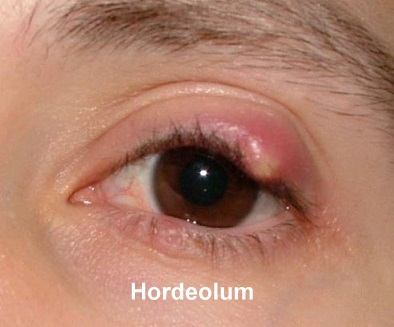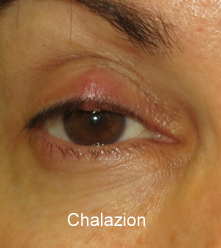A stye (also called a hordeolum) is a small, red, painful lump that grows from the base of your eyelash or under the eyelid. Most styes are caused by a bacterial infection.
There are two kinds of styes:
-
External hordeolum: Most are caused by an infection in the hair follicle.
-
Internal hordeolum: Most are caused by an infection in an oil-producing gland in your eyelid.
Symptoms can include a very painful red bump along the edge of the eyelid at the base of the eyelashes. , usually a small pus spot at the center of the bump.,feeling like something is in your eye, being sensitive to light, crustiness along the eyelid margin, tearing in that eye
A chalazion is a swollen bump on the eyelid. It happens when the eyelid’s oil gland clogs up. At first, you might not know you have a chalazion as there is little or no pain. But as it grows, your eyelid may get red, swollen, and sometimes tender to touch. If the chalazion gets large, it can press on your eye and cause blurry vision. Rarely, the whole eyelid might swell
Difference between a stye and a chalazion?
Sometimes it can be difficult to tell the difference between a stye and a chalazion.
A stye is very painful. It often appears at the eyelid’s edge, usually caused by an infected eyelash root. It often swells, sometimes affecting the entire eyelid.
A chalazion is not usually painful. It is a bump that usually develops farther back on the eyelid than a stye. Rarely does it make the entire eyelid swell.
Who Is at Risk for Chalazia and Styes?
Anyone can get a stye or chalazion. But you are even more likely to get one if you have:
-
Blepharitis, a problem that affects the edge of your eyelid
-
Had a stye or chalazion before
-
A skin condition, such as acne rosacea or seborrheic dermatitis
-
Diabetes or other medical problems
Treatment
-
Warm compresses
-
Antibiotics
-
Steroid shots
-
Surgery to drain the area
-
Massages
-
Do not wear eye makeup or contact lenses while you have a stye or chalazion.
















